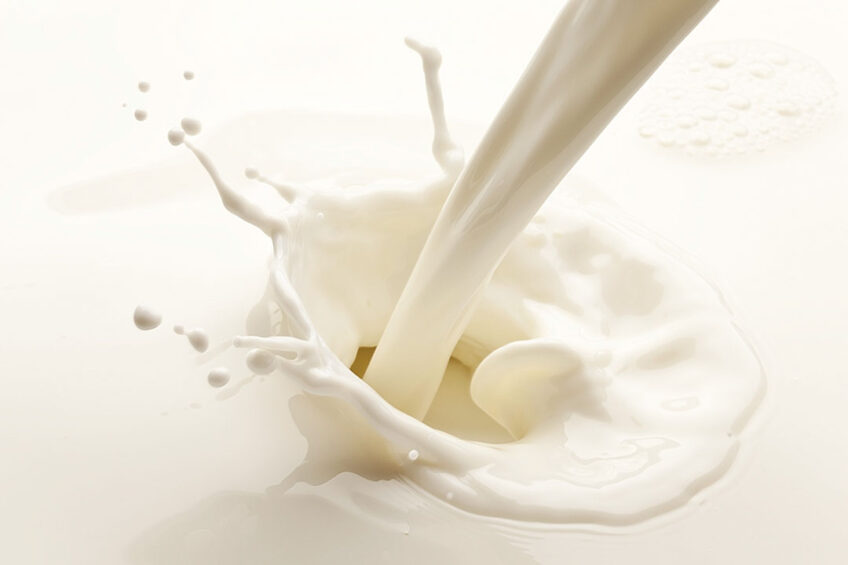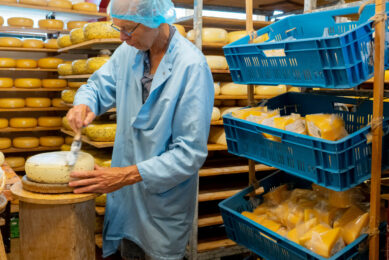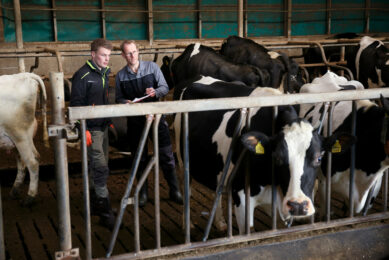Russia: Milk quality under the spotlight

A group of Russian scientists has conducted a throughout research of the Simmental cow breed genotype to discover a promising way of improving milk quality.
The kappa-casein determines the protein content in milk and its coagulability, which means that the cheese texture, smell, and taste also depend on this gene expression.
Scientists from the Siberian Federal Scientific Center and Novosibirsk State Agrarian University researched whether the Simmental cow breed’s genotype could be adjusted to enhance productivity.

According to Galina Goncharenko, a senior researcher, kappa-casein is represented by 3 genotypes: AA, AB, and BB. Under the proper feeding and welfare conditions, the latter type secures the high quality of the obtained milk. This genotype is frequently presented in the Simmental breed, although there could be quite a few animals with the desired genotype in one herd, and much less in another.
One possible explanation of this phenomenon is that it is hard to find pure Simmental cows in Russia these days. They are often crossed with the Red-and-White and Holstein breeds. It is commonly believed that this approach increases milk yields, but it turns out that the Holstenization might negatively affect the genotype, Goncharenko said.
 Russia awaits green light for dairy exports to China
Russia awaits green light for dairy exports to China
Russian companies could get a green light to export new categories of dairy products – whole and skim milk powder – to China already in autumn of 2020.
“We studied how the Holsteinization affects the occurrence of 2 genes associated with the main quality indicators of milk. These are kappa-casein and beta-lactoglobulin, a gene associated with fat and protein content in milk. After crossing in the first generation, the frequency of the desired genotypes occurrence on both genes dropped by 6-8%,” Goncharenko said.
Nikolai Kochnev, a doctor of biological sciences, emphasized that the study has great importance since any farm aims to increase the productivity of cows, but high milk yields should not necessarily lead to a loss of quality. Given this, scientists intend to determine whether the level of milk yield will decrease if the proportion of occurrence of the desired genotype in generations is increased.
We obtained data from 200 animals and found that there was an association between the presence of the BB genotype of kappa-casein and high milk production. It is too early to draw final conclusions, as the work is only being prepared for publication,” said Nikolai Kochnev.
However, preliminary studies showed that cows with the BB genotype produce milk with a higher protein and fat content, which better suits for cheese production. The Siberian scientists are currently conducting tests on 3 groups of animals with kappa casein genotypes AA, BB, and AB, respectively. The level of milk production is compared at different periods of life, starting from the first milking. The comparison criteria are daily and weekly milk yield, protein and fat content in milk, and other indicators.
The scientists claimed it is possible to increase the BB genotype frequency in the population of animals of the Simmental breed already in the next generation by selecting breeding bulls with the desired breeding variations.
 Global dairy market
Global dairy market
Overview of prices for: raw milk, dry whey, skimmed milk powder, cheese and butter.
Cheese industry in the spotlight
The new findings may be very beneficial for the Russian cheese industry, which has been fighting to gain consumer trust and master new types of products during the past few years. The Russian government has been putting a lot of effort into ramping up the domestic cheese production since the introduction of the food embargo in 2014.
In 2013, Russia imported 343,000 tonnes of cheese, with 60% of supplies coming from the European Union. Around 53,000 tonnes were supplied from the Netherlands, 33,000 tonnes from Finland, 24,000 tonnes from Lithuania, 26,000 tonnes from Poland and 38,000 tonnes from Germany. The embargo wiped out all cheese from the European Union in an instant.
Numerous reports indicated that the quality of cheese on the Russian market has deteriorated, as Russian companies appeared unable to offer products of similar quality. To some extent, this is associated with poor milk quality.
 Precision vital in cost-effective milk production
Precision vital in cost-effective milk production
If precision is key to cost-effective milk production, understanding the true energy values of fats will underpin building a successful diet for healthy, fertile dairy cows,
For example, Mika Koskinen, general director of the Russian branch of Valio, complained that the best milk available in Russia was not matching the European standards of the highest quality milk. At the time of food embargo, Valio was primarily importing raw milk from the European Union to its Russian plants.
Russian cheese consumption also leaves a lot to be desired. The average country’s citizens consume only from 5 to 5.5 kg of cheese per year, the Russian analytical agency Petrova 5 Consulting estimated. Nearly a quarter of this figure is so-called cheese-like products – a term used to describe cheese analog, in which milk fat is replaced with cheap substitutes.
In the meantime, Russia produces around 500,000 tonnes of cheese per year, the Russian union of dairy producers Soyuzmoloko estimated. This figure is likely to grow to 700,000 tonnes per year in the next several years, as a rising number of companies launch new projects in the field of cheese production, Soyuzmoloko said.
A wide presence of counterfeit products has hampered the industry, but new traceability systems the government introduced on the food market have made access to counterfeit cheese on the grocery shelves nearly impossible.
Join 13,000+ subscribers
Subscribe to our newsletter to stay updated about all the need-to-know content in the dairy sector, two times a week.










